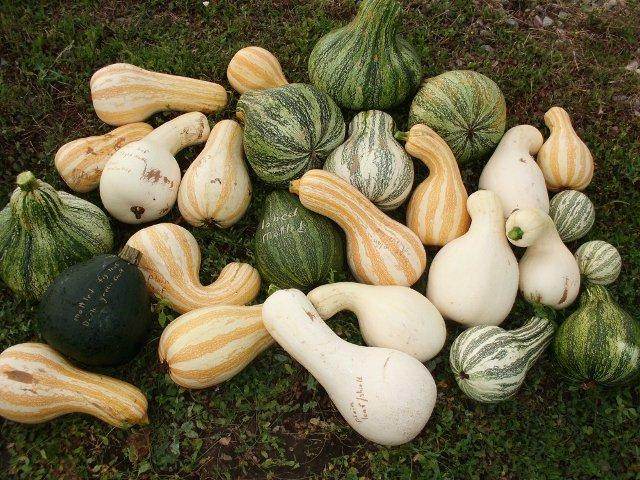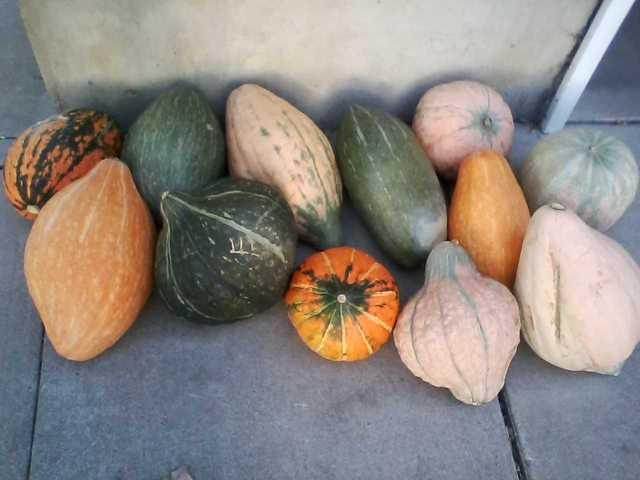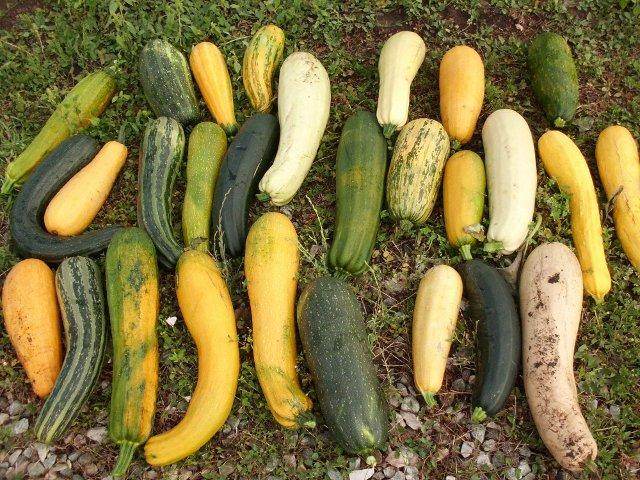




 I'm at wits end!
I'm at wits end!




Idle dreamer




Sometimes the answer is nothing





Idle dreamer




 It has been a strange year, but here on the Minnesota/North Dakota border, it's like the devil's triangle of inland weather regions. The best thing that can be said in addition to dryland farming on good soil here is that the severe winters do knock back a fair number of insects and diseases.
It has been a strange year, but here on the Minnesota/North Dakota border, it's like the devil's triangle of inland weather regions. The best thing that can be said in addition to dryland farming on good soil here is that the severe winters do knock back a fair number of insects and diseases.
“The most important decision we make is whether we believe we live in a friendly or hostile universe.”― Albert Einstein




Tyler Ludens wrote:This is being an exceptionally difficult year. We got a hailstorm and flood, now this super heat. I started the thread about heat tolerant vegetables: https://permies.com/t/57509/plants/Heat-tolerant-vegetables
Total fail on squash this year due to squash bugs, when last year was a great squash year and I was looking forward to counting on it as a staple.
I've planted a lot of Sweet Potato. So far, Bunch Porto Rico is doing the best. I also have what I think is probably Georgia Jet, and some purple variety, from the store.
Melons are doing well, and finally setting fruit, as are Eggplant.
Tomatoes have done poorly so far, and now of course it's too hot for most kinds to set fruit so we have to wait for Fall.

 3
3




Deb Stephens wrote:Anyone have suggestions for other varieties of fruits and vegetables that do well in extremely hot/humid areas?




Idle dreamer




Don't let perfect be the enemy of good.




It's never too late to start! I retired to homestead on the slopes of Mauna Loa, an active volcano. I relate snippets of my endeavor on my blog : www.kaufarmer.blogspot.com




Idle dreamer
 2
2





 2
2




Chris Wells wrote:I plant an assortment of crops suited to hot weather, cold summers, arid climates and overly humid ones. Bountiful harvests are commonplace; I never know which crops will perform, but there is always something to eat.
 1
1




Joseph Lofthouse wrote:
Deb Stephens wrote:Anyone have suggestions for other varieties of fruits and vegetables that do well in extremely hot/humid areas?
My experience is that the varieties that do best for me are those that I planted from seed that I saved last year... and the year before that... and the year before that... and the year before that... and the year before that... and the year before that... and...

 2
2








Tyler Ludens wrote:Wayne, are your Luffa producing yet? Mine are growing like crazy but don't seem to be blooming, unless it's off on the end of one of the very very long vines - they're climbing into the trees!
I'm hoping they might work as a summer squash substitute, if they would only fruit...
Sometimes the answer is nothing





Joseph Lofthouse wrote:
That's my strategy as well. I'm currently growing 5 species of squash, and 11 species of beans. I'm growing corn from the far north, from South America, from the rain forest, from the arid southwest, from maritime Caribbean, from southern north America, from the highlands, from the lowlands, etc, etc, etc. I'm growing 6 species of tomatoes. Something always thrives regardless of the weather.
Idle dreamer

 2
2








Idle dreamer




“The most important decision we make is whether we believe we live in a friendly or hostile universe.”― Albert Einstein




wayne fajkus wrote:
Tyler Ludens wrote:Wayne, are your Luffa producing yet? Mine are growing like crazy but don't seem to be blooming, unless it's off on the end of one of the very very long vines - they're climbing into the trees!
I'm hoping they might work as a summer squash substitute, if they would only fruit...
Yes. Several fruit from babies to full grown. Gonna let them dry on The vine. Is that correct for the sponges? Been 25 years since I planted them. Lol












Deb Stephens wrote:
wayne fajkus wrote:
Tyler Ludens wrote:Wayne, are your Luffa producing yet? Mine are growing like crazy but don't seem to be blooming, unless it's off on the end of one of the very very long vines - they're climbing into the trees!
I'm hoping they might work as a summer squash substitute, if they would only fruit...
Yes. Several fruit from babies to full grown. Gonna let them dry on The vine. Is that correct for the sponges? Been 25 years since I planted them. Lol
Wayne, If you want sponges, keep the biggest and straightest luffa and yes, let them dry on the vine. However, if you are in a wet or humid area like I am, you need to keep them dry or you'll get mildew--which can pretty much ruin them. Putting something over the top, but allowing for airflow by clearing out surrounding vines will help keep them dry and unblemished while they cure. Don't forget though, as Tyler mentioned, that the smaller ones (and even the bigger ones if tender) are really good as a cucumber or squash substitute. Personally I think they taste more like cucumbers and use them mostly fresh, but they're good cooked too.
Sometimes the answer is nothing





 2
2




Joseph Lofthouse wrote:
We are expecting temperatures the next couple days that are flirting with freezing the tomatoes due to radiant cooling. A fellow at market this week said, "That would be a disaster for you!". My response was, "No. That's just farming". I'm growing a hundred crops. It doesn't matter if some of them get killed by frost. There will be something that doesn't get harmed.

 2
2








 ) but the unstable and the ultra hot I can live without.
) but the unstable and the ultra hot I can live without.



 Really depressing.
Really depressing.
Idle dreamer




Joseph Lofthouse wrote:
Just because I can't put a name on why a plant died in my garden, doesn't mean that I had no fault in it's demise...
 1
1




t's my philosophy that if every crop is precious, then not enough crops are being planted... If every plant/seed is precious, then not enough plants and seeds are going into the ground. I'm growing more than 400 varieties of beans, from 11 species, and I'm doing it on a scale that many home gardeners could easily duplicate. Every squash seed that I plant is a unique variety due to promiscuous pollination... Therefore, if I plant 500 squash plants, I am planting 500 varieties. And I'm planting every species that will grow here, because if the squash bugs eat the maximas, perhaps the cushaws might survive. If the powdery mildew gets the pepos, perhaps the lagenarias might survive.
Don't let perfect be the enemy of good.









Take your yard beyond lawn, and farm further http://abundantdesign.com/

 4
4




Deb Stephens wrote:So ... what do you do about preventing or curing Cucurbit Yellow Vine Wilt? [...] It also doesn't seem to have a cure





 1
1




Joseph Lofthouse wrote:
The University of Kentucky extension service says "... eliminating squash bugs is the key to yellow vine decline management. Use insecticides to control squash bug as soon as the plants are set or seedlings emerge in the field ... Multiple foliar sprays are needed ...".
The way to prevent or cure Cucurbit Yellow Vine Wilt is to grow a genetically diverse population of squash in areas that are severely affected by the wilt. And to not use any crop protection chemicals. No pesticides. No fungicides. No antibiotics. No diatomaceous earth. No traps. No collars. No fertilizers. No floating row covers. No nothing. And allow them to promiscuously pollinate. After a few generations, the survivors will be approximately immune to squash bugs and to Yellow Vine Wilt.
So my formula for curing Cucurbit Yellow Vine Wilt would go something like this:
Plant a few seeds of lots of different varieties (and species) of squash. Including some older, less industrialized varieties. Allow them to grow without crop protection chemicals or techniques. Allow them to promiscuously cross pollinate. Replant seeds from anything that survives. Repeat each year, planting more than 90% of your squash patch from your own saved seed, and no more than 10% from new varieties.
 So ... bugs and fungus love us. It is a LOT harder to handpick a million squash bugs off a plant than a few here and there. Sometimes you work at it all day and it still isn't enough.
So ... bugs and fungus love us. It is a LOT harder to handpick a million squash bugs off a plant than a few here and there. Sometimes you work at it all day and it still isn't enough.

 1
1




 1
1




Joseph Lofthouse wrote:
I had 100% crop failure on runner beans for the first 5 years that I planted them. No worries, I just searched further afield for seed.
I had 100% crop failure on mixta squash for the first 5 years that I planted them. Again, I just sought out more and more varieties.
 Everything is so damp here as it won't stop raining. All courgette plants healthy, but the mini courgettes all have blossom end rot. The pear tree has what is probably rust.
Everything is so damp here as it won't stop raining. All courgette plants healthy, but the mini courgettes all have blossom end rot. The pear tree has what is probably rust.




Idle dreamer




Charli Wilson wrote:
I only have 1/10th of an acre! I don't have room to plant anything where I don't get a result for 5 years!
And 500 squash plants would be amazing! I have room for about 4.
Charli Wilson wrote:
Last cucumber has succumbed this morningEverything is so damp here as it won't stop raining. All courgette plants healthy, but the mini courgettes all have blossom end rot.

 1
1




Casie Becker wrote:This is one of the areas where I am exceptionally grateful that I'm starting this project so many decades before I retire. Hopefully when I'm old and worn down I will have crops that can be more forgiving of a gardener's failures.


|
Stop it! You're embarassing me! And you are embarrassing this tiny ad!
the permaculture bootcamp in winter (plus half-assed holidays)
https://permies.com/t/149839/permaculture-projects/permaculture-bootcamp-winter-assed-holidays
|



